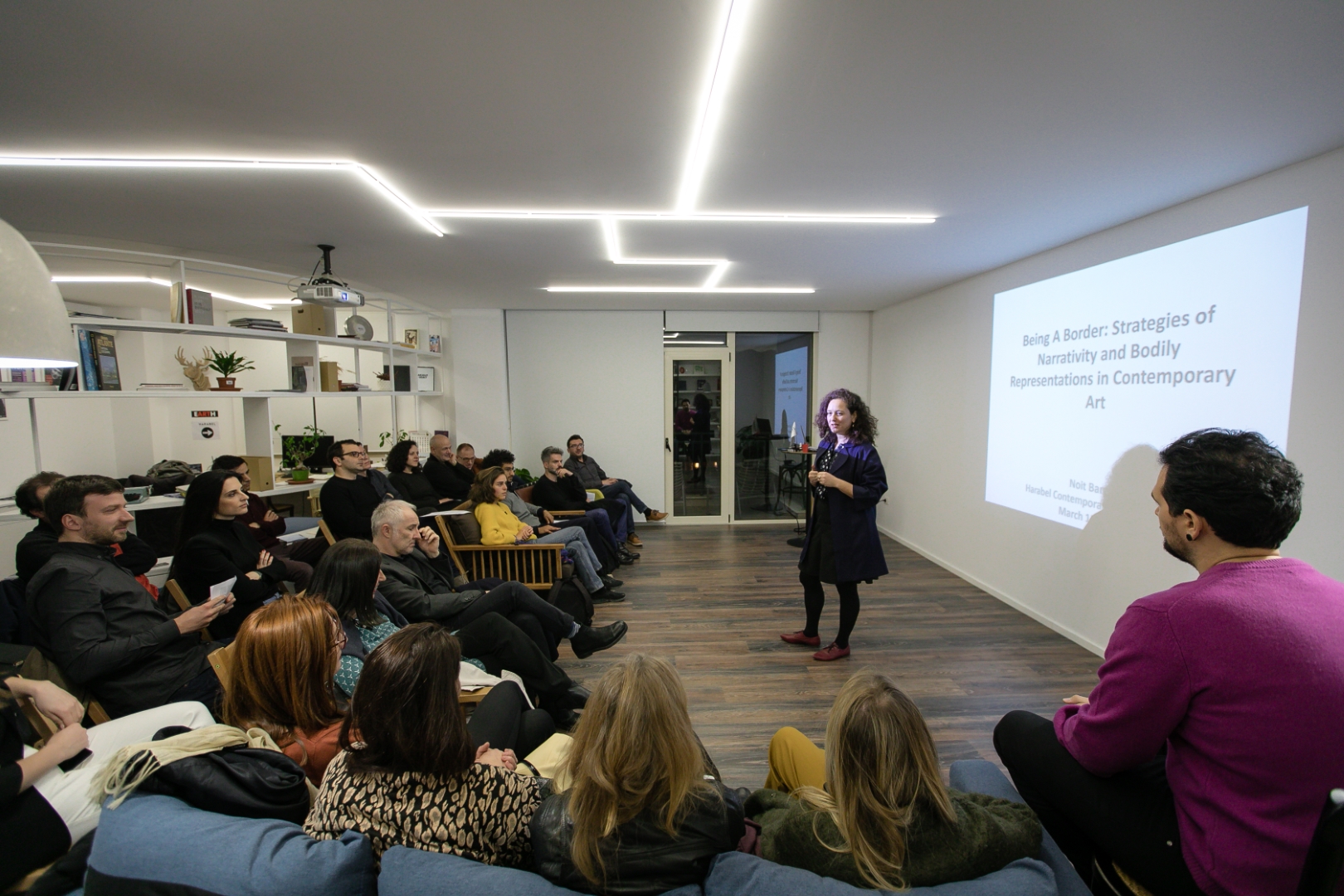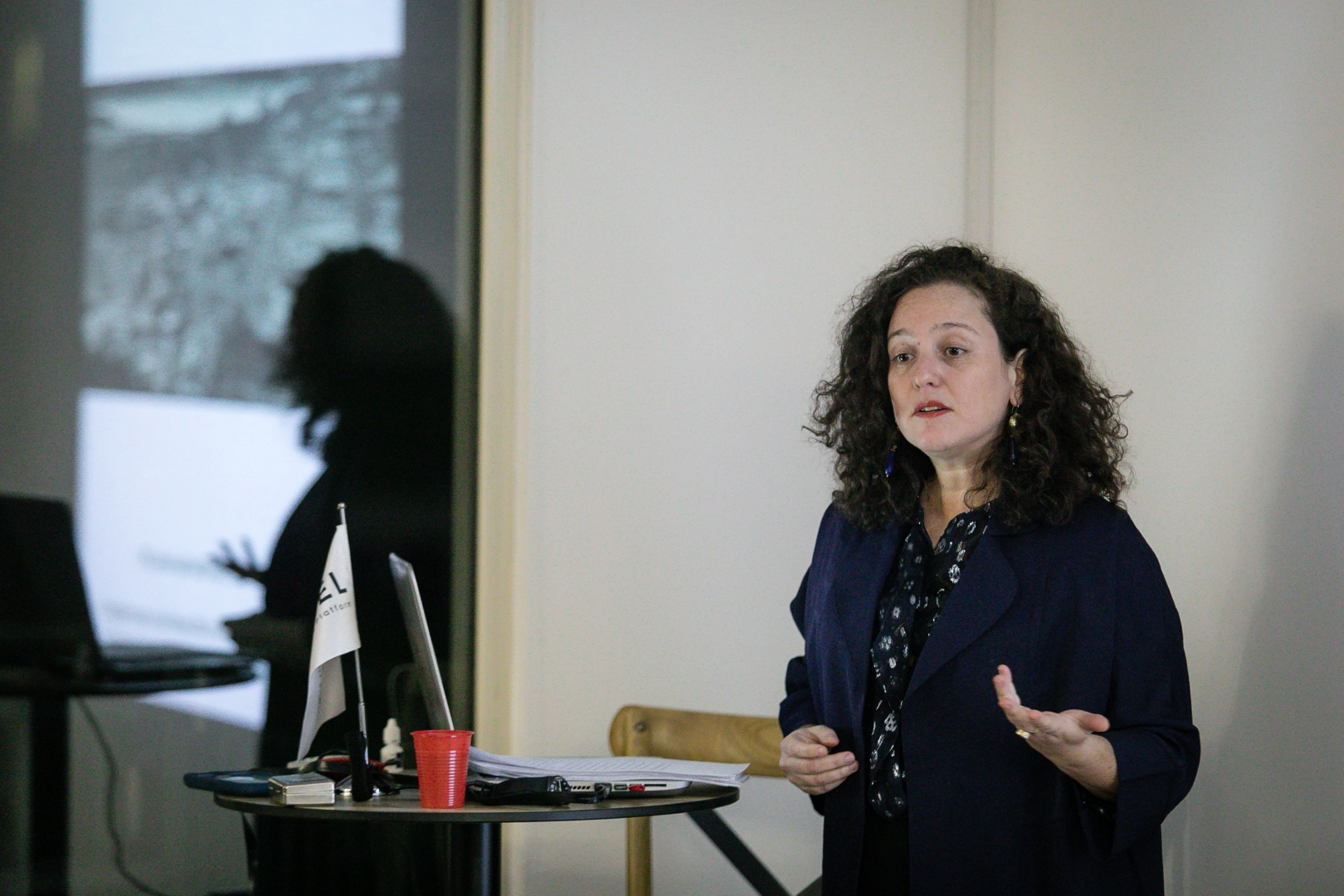Noit Banai, a historian and art critic, held her talk at the premises of Harabel Contemporary Art Platform on March 15th, 2019. This event was supported by the Austrian Embassy in Tirana. Regarding the topic she discoursed: “Being a border: Strategies of Narrativity and Body representations in Contemporary Art”, Noit Banai relied on several international authors who previously analysed the human movement around the world as well as the social phenomena that follows it. She started with the reasoning of French philosopher Étienne Balibar that cultures, languages and genealogies help “… nationalize societies …”.

Human movement, desired or not, conditioned by a variety of circumstances produces reactions of different kinds – attitudes, which also come through via artistic language. “The Centre for Political Beauty” (Zentrum für Politische Schönheit) in Germany was brought in the conversation through the work “AYLAN 1” (Alexander Lehmann and Nick Jaussi), one of the 1000 rescue platforms, located in the Mediterranean Sea in 2015, a counteraction driven by the drowning of a 3-year-old Syrian child.
What is the best case scenario? So what happens when they overcome the risk of sinking in their laborious struggle for salvation from their country of origin? The first shelter is the camp. To illustrate this, attention was brought to some of the photos of Irish artist Richard Mosse. (“Moria in Snow” (Lesbos) represents the vast Moria camp on the island of Lesbos in Greece, where 9,000 migrants were accommodated even though it was built to welcome only 3,100). All other footage: “Details from Moria in snow”, “Details from Camp Idomeni”, “Hellinikon Olympic Arena” (the stadium, which became a refuge for 2,000 refugees in 2016) and “Tempelhof interior” provide different angles of the living conditions in the camps, which are comparable to the concentration camps and to the medieval strongholds also, thus re-isolating this community whose reason for moving is precisely to be free.
“No Man’s Land”, a work by Lucien Jonas, included in the discourse by Banai, is a bitter culmination, which represents human decay in a straightforward sense and not only. Beyond human hardship, what other social phenomenon does this forced movement bring? In connection with this, Noit Banai mentions philosopher Simone Weil and her thoughts on eradication as one of the most dangerous diseases to which human societies are exposed to.
The Italian duo Vedovamazzei (Simeone Crispino and Stella Scala) are mentioned in this talk for their work entitled “Floating Human Shit…” (No. 3, 7, 9), a work in which the authors treat the disregard for lost lives at sea with sarcasm, deliberately provoking through graphical presentation of human food residues overlapping idyllic natural seaside landscapes. Among other things, Noit Banai quotes sociologist W.E.Du Bois, by analysing man’s “double consciousness”, while he is trying to adapt and survive without a real conscious, forcing him to see one’s self and the world through the eyes of others.
Despite efforts for development and equality, humanity has not escaped from “colonial and patriarchal mould”. In the video installation “Illusions. Narcissus and Echo” (2016-2017) this is exactly the concern raised, searching for a way out of all this, by the Portuguese multidisciplinary artist, Gustaf Kilomba, the artist who closed the lecture of Noit Banai at the Harabel Platform.







